Joshua Tree National Park is well known as the home to freaky looking Joshua Trees. But there is much more to the park than just that.
Do you want to learn about this unique national park? Here are 10 Joshua Tree National Park interesting facts to enjoy …
Subscribe to daily national parks planning tips, travel inspiration and trip ideas and get instant access to the free PDF
10 Fun Facts about Joshua Tree National Park
No time right now to discover these fun facts about Joshua Tree National Park? Pin It and save it for later:
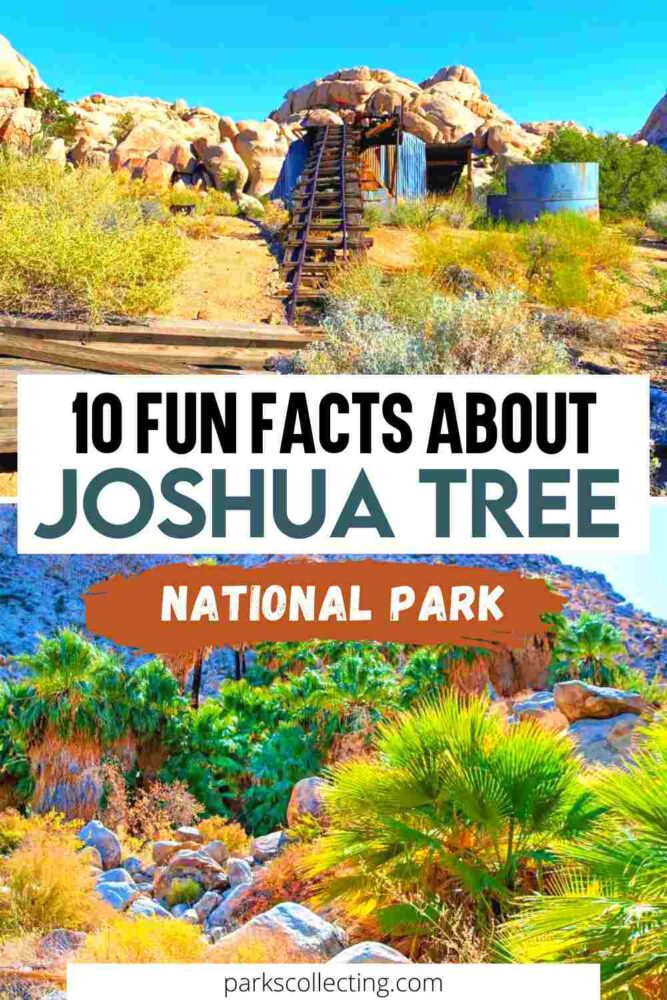
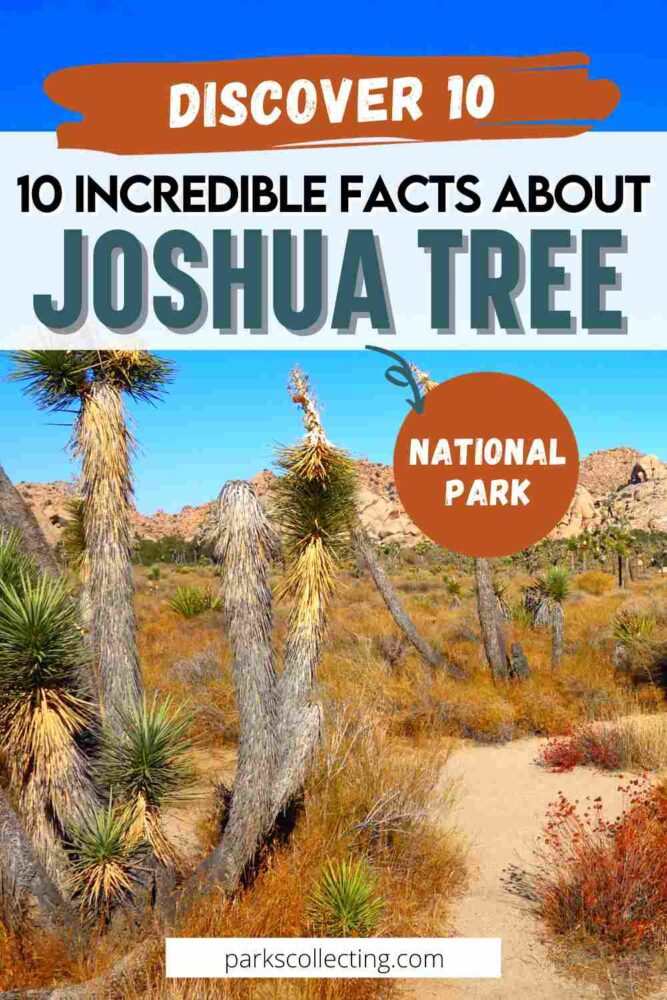
🛏️TOP HOTEL PICK: Check availability now
🚘FIND THE CHEAPEST CAR RENTAL: Search Discover Cars for the best deals
✈️FIND THE CHEAPEST FLIGHTS: Search Skyscanner for the best deals
🧳GET TRAVEL INSURANCE: Get insured with Travelex before you go
📱TAKE AN AUDIO TOUR: Buy an audio tour now
Table of Contents
Basic Facts about the Joshua Tree National Park
⭐ Location: California
⭐ Size: 795,156 acres (includes both private and state –holdings)
⭐ Number of Visitors each Year: 3,058,294 visitors in 2022
⭐ Annual Rainfall: Average of 8 inches of rain
⭐ Highest Elevation: 5,814 feet (Quail Mountain)
⭐ Lowest Elevation: 536 feet (the southeastern border of the park)
⭐ Date it Became a National Park: President Franklin D. Roosevelt created Joshua Tree National Monument in 1936. It wasn’t until 1994 that it became Joshua Tree National Park.
10 Fun Facts About Joshua Tree National Park
1. Joshua Trees aren’t really trees
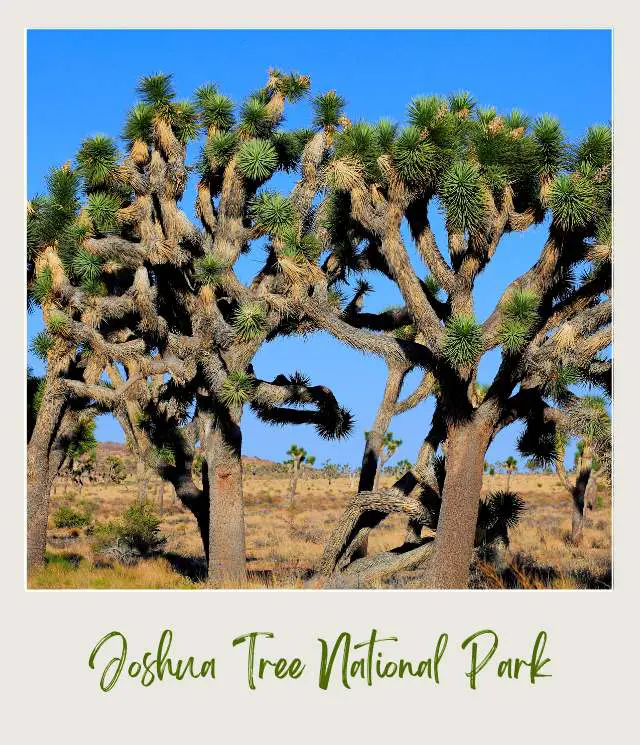
When is a tree called a tree and looks like a tree, but is not a tree? When it’s a tall yucca plant.
Yep, one of the most surprising Joshua Tree National Park fun facts is that Joshua Trees are not actually trees at all. They are tall and look to have branches, but they are, in fact, a species of yucca plants – a kind of succulent that is part of a subgroup that includes flowering grasses and orchids.
Joshua Trees are pretty cool plants. Although they grow slowly – just 1 – 3 inches a year, they live on average 150 years, so can grow up to 70 feet tall.
These unusual plants are found only in the American Southwest and northwestern Mexico. They grow mostly in the Mohave Desert, but you can also see them in the nearby Sonoran Desert.
There are almost 1 million Joshua Trees alive today, but that hasn’t stopped them being protected in recent years under California’s Endangered Species Act due to threats posed by climate change.
➡️ READ MORE: Learn more about this area, from the early inhabitants to the establishment of a national park in Joshua Tree National Park by JW Zarki
2. Joshua Trees were given their name by Mormon settlers

The Cahuilla People, one of the Native American tribes living in the area before European settlers, called Joshua trees humwichawa or hunuvat chiy’a.
It wasn’t until early Mormon settlers arrived that they got their iconic name.
Word has it that when the Mormons arrived in the 19th century, they thought that the tall succulents with their outstretched branches reminded them of Joshua, who in the Old Testament Bible story of Joshua held his arms up to heaven in a prayer to God as he led the Israelites across Canaan.
Perhaps they help guide modern travelers through the desert???
3. Joshua Tree was almost named Minerva Hoyt National Park

Minerva Hoyt was a southern belle born on a Mississippi cotton plantation. She married a wealthy surgeon from New York and they moved to California in the 1890s.
After traveling to the desert, Minerva fell in love with the desert and its beauty.
After witnessing people digging up, burning and destroying cacti and other desert plants, she became a fierce desert conservationist. It inspired her to start the International Deserts Conservation League in 1930 with the goal of establishing parks to preserve desert landscapes.
She helped establish a cactus reserve near Tehuacan in Mexico. And she campaigned hard for the creation of a national park around the current Joshua Tree area. After six years of hard work, Joshua National Monument was finally created in 1936.
Given the indispensable role she played in creating the national monument, many people thought it should be named after her. The Mayor of Los Angeles and the Los Angeles Area Chamber of Commerce asked the Interior Secretary Harold Ickes to name the site the Minerva Hoyt National Monument.
It’s thanks to Minerva herself that this didn’t happen. She wrote to the Altadena Historical & Beautification Society informing them that she preferred the name “Joshua Tree National Monument.”
And so it was so.
It took another 59 years for it to gain full National Park status, but the area was protected thanks in no small part to Minerva.
➡️ READ MORE: Learn more about Minerva and the history of Joshua Tree National Park: Preserving the Desert: A History of Joshua Tree National Park by LM Dilsaver
4. There are two deserts for the price of one in Joshua Tree National Park
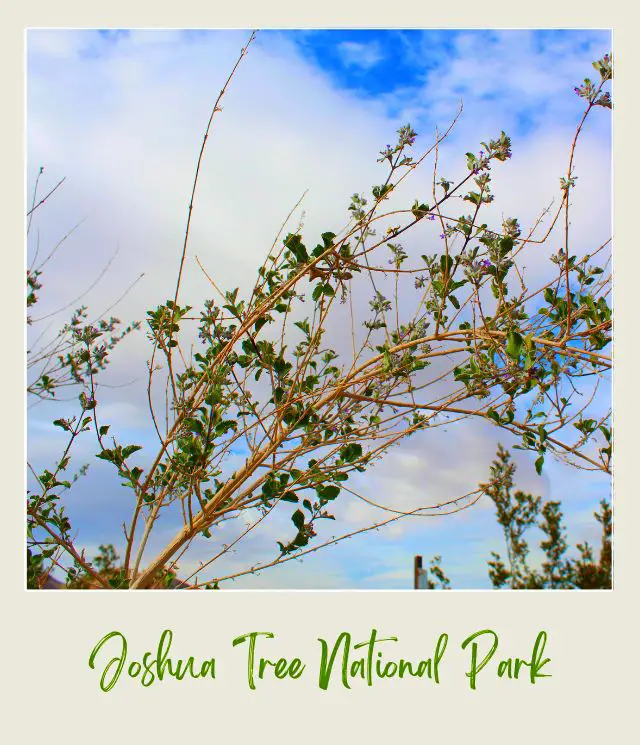
The western side of the national park is the Mojave Desert and the eastern and southern portions of the park are part of the Colorado Desert.
This is more than just a name change. The two deserts are at different elevations and therefore have different ecosystems!
The Mojave Desert is higher and this is where you’ll find the Josua Trees that give the park its name. The largest concentration of Joshua trees in the world is found on the 1500-foot Cima Dome (though a fire in 2021 burned thousands of them).
The Colorado Desert is lower and slopes gently down from the higher Mojave Desert. It’s not only lower, it also gets more rain. Here, you’ll find agave, desert lavender, and ocotillo plants.
➡️ READ MORE: If you’d like to know more about the fascinating Mojave Desert, read A Natural History of the Mojave Desert by LR Walker
5. It snows in Joshua Tree National Park
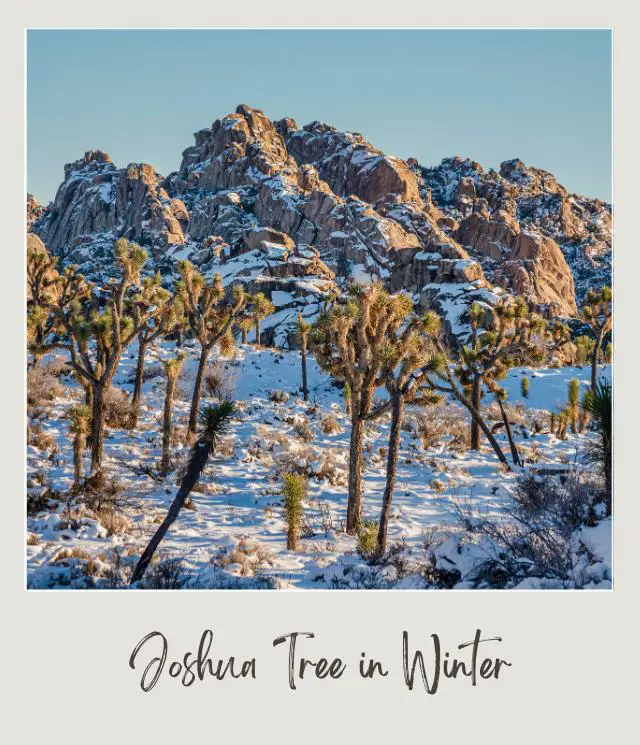
You’d think that being two deserts would mean it was hot all the time. Not so much. Some surprising Joshua Tree information is that it does in fact snow in Joshua Tree National Park.
Don’t get me wrong. In summer, temperatures frequently exceed 100°F. If you visit in summer, be prepared for scorching temperatures.
However, if you visit in winter, it’s a whole other story. The park typically gets a dusting of snow each year.
Snow is heaviest in the mountainous part of the park, but it can snow even in the lower reaches. It rarely lasts very long, but if you’re there when it snows, you’ll be rewarded with a magical white desert landscape.
6. Joshua Tree is the best place in southern California to see stars
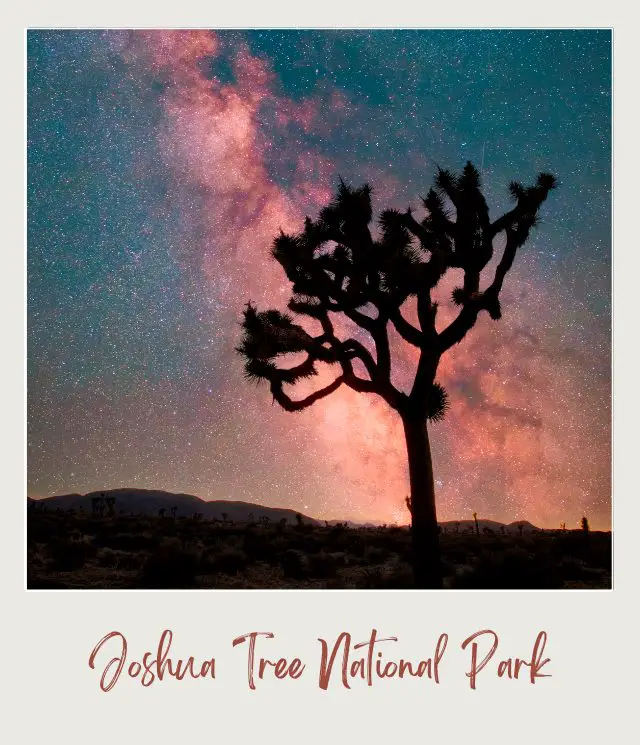
You may see stars in Los Angeles working at one of the movie studios, but Los Angelenos head to Joshua Tree to see stars of a different kind.
With a wide-open space and very little development nearby, the eastern side of Joshua Tree National Park has one of the last pools of natural darkness remaining in Southern California. Although there is light pollution on the west side from nearby Palm Springs, if you head to the east, you’ll be rewarding with outstanding views of the Milky Way and thousands of stars.
So much so, that Joshua Tree is an officialy designated Dark Sky Park. This recognizes the quality of star gazing and helps preserve the night sky for future generations.
The best place for star gazing is the northeastern section of the park. The main part of the park is open 24 hours, so you can drive in and park at any pullout to enjoy the night sky.
There’s also an observatory in 29 Palms. 29 Palms hosts a night sky festival, which usually takes place in September or October.
➡️ READ MORE: If you’d like to learn more about star gazing, a good place to start is Stargazing: Beginners Guide to Astronomy by Royal Observatory Greenwich, R Topalovic, and T Kerss
7. The park is home to jumping cactus plants
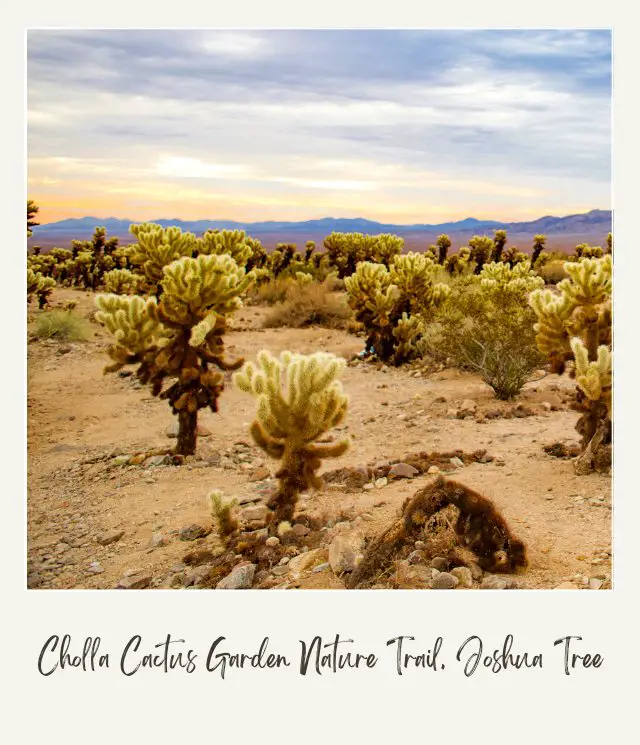
There are 15 species of cacti in Joshua Tree National Park. And, of course, as cacti typically do, they are covered in spikes. Only one jumps at you, though!
With the adorable name of Teddybear Cholla (Cylindropuntia bigelovii), these white-tipped cactus plants look fuzzy and cute. This is not a teddy bear you want to pet, though.
The cacti are covered in tiny barbed spines that very easily detach. If you get close to them, they ‘jump’ on to you, by detaching at the lightest touch.
They are actually ingenious in a way. If they spines land on the ground, they grow, so this is their way of increasing their reproductive chances.
You might not appreciate their ingenuity if they ‘jump’ onto you though. The spines latch on to you and are difficult and painful to remove.
A popular place to see them (from a safe distance) is the Cholla Cactus Garden.
➡️ READ MORE: This and 9 more great hikes in my guide to The 10 Best Hikes in Joshua Tree National Park
8. Joshua Tree National Park contains about 300 abandoned mine sites
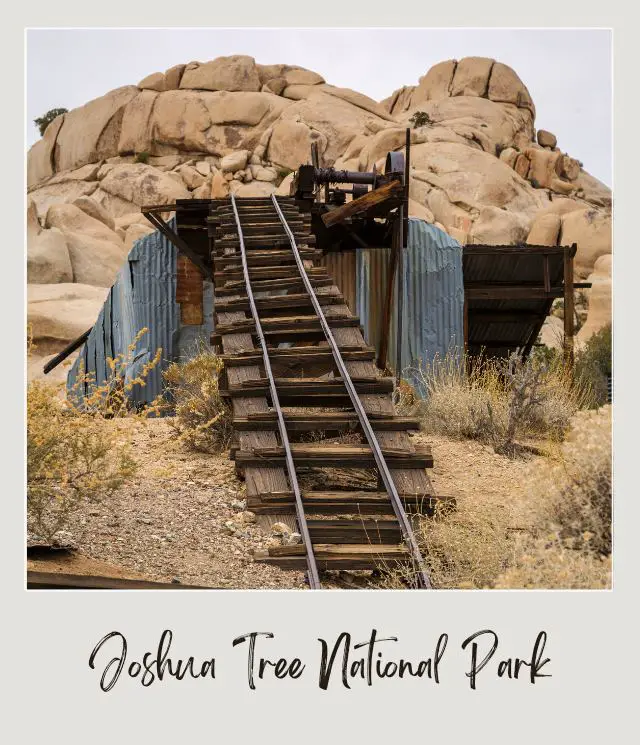
Some Joshua Tree National Park information that you may not be aware of involves the park’s history prior to becoming a park.
Gold was discovered in the Sierra Nevada foothills starting in the late 1860’s.
Mining in the area started in the Twentynine Palms area, but soon spread. Eventually, there was 300 mines in the area, leaving abandoned mine sites scattered throughout the park today.
If you want to see this slice of history, a popular site is Wall Street Mill. Here you can visit the ruins of one of the last gold ore crushing mill in the area. It was in operation until the mid-1900s.
The mill has some sordid history. It was built by Bill Keys, a local rancher, miner and colorful character. In the 1940s, Keys and Worth Bagley fought over access to the Wall Street Mill. Keys shot and killed Bagley in 1943. Keys was convicted of manslaughter and sentenced to 10 years in prison. His case was later reopened and he was released on a technicality and fully pardoned after serving 5 years of his 10 year-sentence.
Arriving back home from prison, the very first thing Bill did was to place a stone commemorating the event with the inscription: “Here is where Worth Bagley bit the dust at the hand of W. F. Keys, May 11, 1943.”
You can reach Wall Street Mill on a 2.2-mile hike from the Barker Dam parking lot. There are several abandoned antique cars along the trail, which make for fun photos.
➡️ READ MORE: Learn more about the gold mining technique they used with a lack of water in Dry Washing for Gold by J Klein
9. There are 5 desert fan palm tree oases
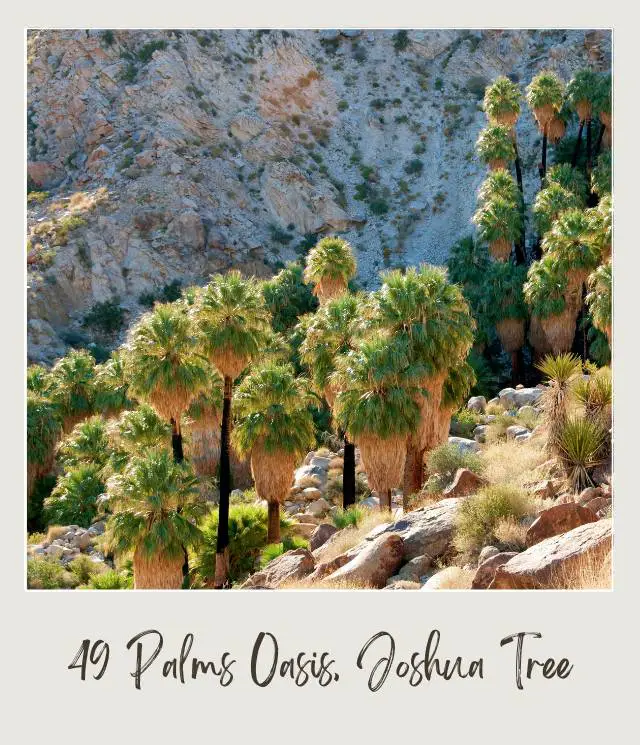
Joshua Trees may not be real trees, but that doesn’t mean that there aren’t any trees in the national park. One of the more beautiful trees are the desert fan palms (Washingtonia filifera).
Growing up to 75 feet tall, they are one of the tallest North American palms. They are especially beautiful because of their distinctive fronds that are shaped like a fan and folded like an accordion. They measure up to six feet in length and are nearly as wide.
There are only 158 desert fan palm oases in North America. Five are located in Joshua Tree National Park.
The oases provide a habitat for bighorn sheep, Gambel’s quail, and coyotes that help spread palms by eating palm fruit at one location and depositing the seeds at another.
The most popular oasis to see these beautiful trees is the Fortynine Palms Oasis. The others are Lost Palms, Cottonwood Spring, Munsen Canyon, Victory Palms and Oasis of Mara.
10. There’s a dam in Joshua Tree National Park

Barker Dam, also called the Big Horn Dam, was built in two stages. The first dam, which was about 9 feet high, was built of stone in 1900 by early cattlemen, including C. O. Barker. In 1949, rancher Bill Keys (yes, the same one who allegedly shot Worth Bagley) made it 6 feet higher by building a concrete second level.
The dam is reached on a 1.5-mile loop trail between Queen Valley and the Wonderland of Rocks near the Wall Street Mill.
➡️ READ MORE: Discover this and more “secret” places within Joshua Tree National Park, The Mojave National Preserve, and surrounding areas in Secret Places in the Mojave Desert, Vol. IV: Joshua Tree & The Mojave Preserve by Death Valley Jim
More Information About Joshua Tree National Park
Are you feeling inspired to visit Joshua Tree National Park? Start planning your trip now with these guides:
⭐ Joshua Tree National Park Guide
⭐ Planning A Trip to Joshua Tree National Park: 7 Mistakes to Avoid
⭐ The 10 Best Hikes in Joshua Tree National Park
⭐ How to Get to Joshua Tree National Park
⭐ All The Airports Near Joshua Tree National Park
⭐ What Is The Closest Airport To Joshua Tree National Park?
⭐ Best Time To Visit Joshua Tree National Park
⭐ Visiting Joshua Tree National Park: What To Expect Throughout the Year
⭐ 10 Tips For Visiting Joshua Tree National Park
⭐ The 20 Best Vacation Rentals in Joshua Tree
Do you have any other fun Joshua Tree facts to share? I’d love to hear them. Join my private Facebook group National Parks Collectors and comment and let me know (you can also pick up extra planning tips, share your photos and stories with other national park lovers and more).
Subscribe to daily national parks planning tips, travel inspiration and trip ideas and get instant access to the free PDF
10 Fun Facts about Joshua Tree National Park
If you liked these fun Joshua Tree National Park facts, please share the love and Pin It to your Joshua Tree National Park board!


💡 Are you just starting to think about taking a national parks trip? Get Inspiration
‼️ Are you looking for helpful tips for visiting US national parks? Read articles that share useful tips on a range of national-park related issues
💻 Are you starting to plan a trip to Joshua Tree National Park? Read my Guide to Joshua Tree National Park
🛏️ Are you looking for a place to stay near Joshua Tree National Park? Find a vacation rental near Joshua Tree National Park
💲 Are you ready to book your trip? Use these Planning and Booking Resources
📖 Do you want to read a book about US national parks? Check out my Recommended Reading Lists
About the Author
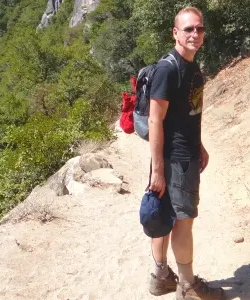
James Ian is a national park, camping and hiking expert.
He has dedicated his life to travel, visiting more than 80 countries, all 7 continents and most of the national parks in the United States. With over 35 years experience in the travel industry, James has worked on cruise ships, at resorts and hotels, and as a travel planner who’s helped hundreds of people plan successful trips to US national parks.
Based on his experience visiting our national parks multiple times, in-depth research and expertise as a travel planner, James has published detailed itineraries for many of the major national parks in the US. These itineraries, as well as in-depth park guides, and other resources will help you have your own incredible trip to US national parks without stress and hassle.
As a national park expert, James has contributed to many publications, including USA Today, Newsweek, Time Business News, Savoteur, Best Trip, and Wired.
I’m a member of the Amazon Services LLC Associates Program. As an Amazon Associate I earn from qualifying purchases.
